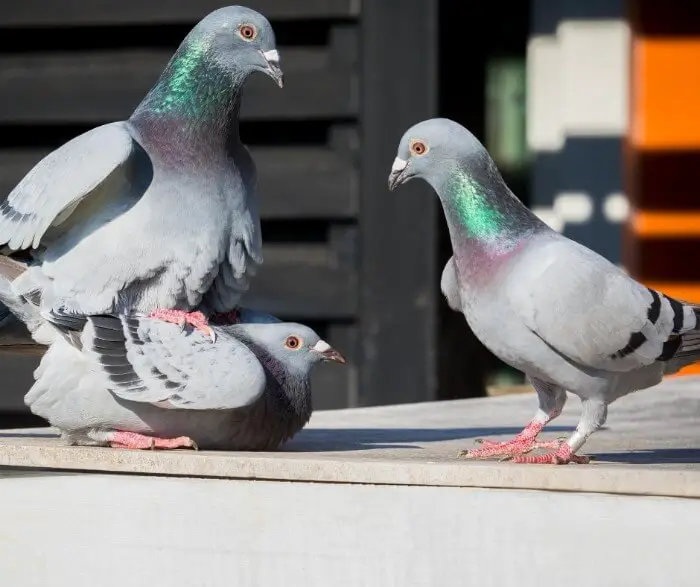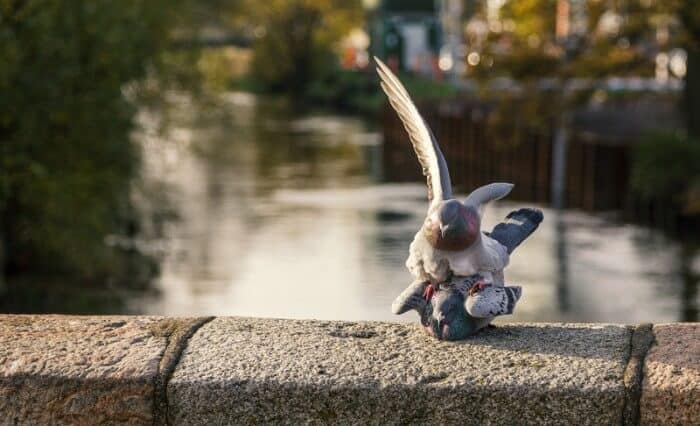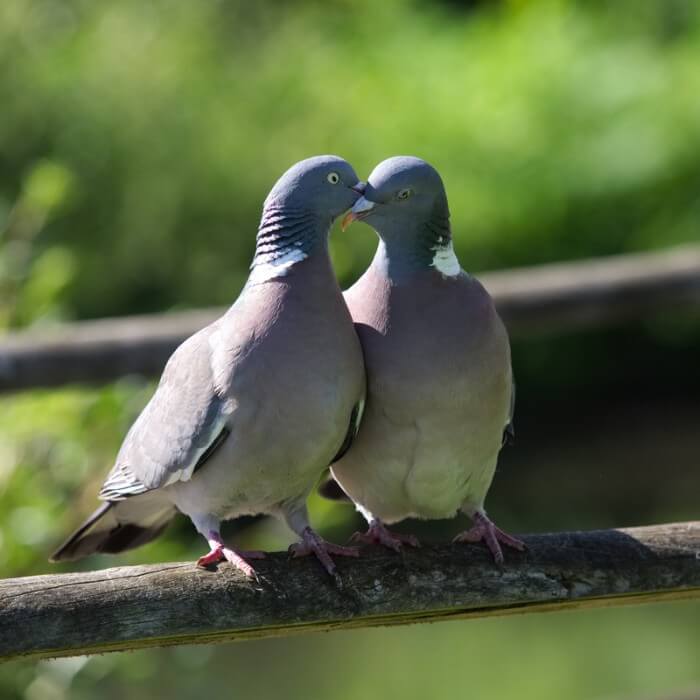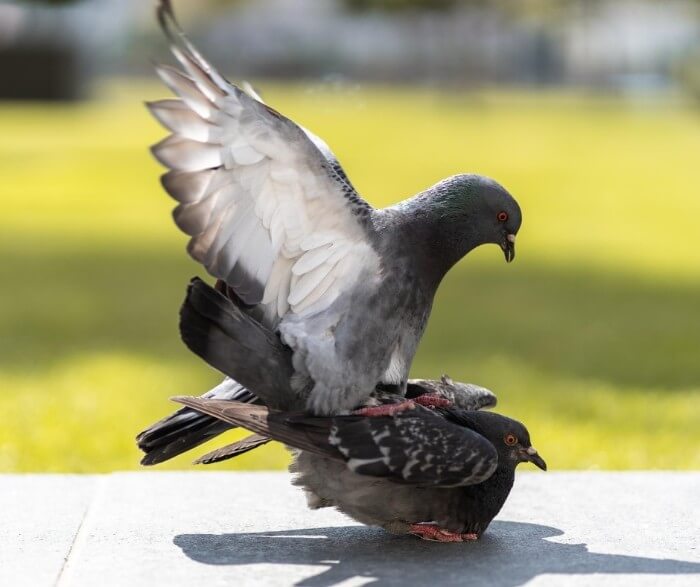Pigeons mate most usually on the ground, sometimes in trees but never in flight. Even though the act is short, it involves the cock (male pigeon) perching on the female bird so a stable platform is necessary.
Pigeons don’t have a penis or vagina-type sexual organs. Instead, they have cloacal openings which are used for urination, pooping, laying eggs (for the females), and mating. Pigeon sex is a meeting of the cloacas in what is known as a “cloacal kiss”.

Afterward, males will often engage in a display called ‘clapping’.
They soar into the sky and bring their wings in a clapping motion.

Pigeon’s Sexual Organs
Pigeons, like some other animals, don’t have a separate set of sexual or reproductive organs.
Everything is tied to their anal tract, called the cloaca. This is also sometimes called the vent.
It is a channel or canal which serves the birds as a digestive, excretory and reproductive tract.
It isn’t a one-way system as it has a double function of carrying male sperm to the female’s ovaries.
The male pigeon has exactly the same, which makes sex awkward.
The Cloaca
The cloaca is a chamber and outlet which both male and female pigeons possess (like most birds), into which the intestinal, urinary, and genital tracts open.
In male pigeons, it also houses the testes, and in female pigeons the ovaries.

In both genders when they are ready to mate, their testes and ovaries swell or inflate respectively.
Actually, one of the brief times that you can physically tell the difference between males and females is by looking at their cloaca.
Both swell during the breeding season, but the males tend to inflate more as the cloaca will produce and hold the sperm.
The Act Itself

It may be over in a few seconds, but there is a bit of romance in the pigeon world. The male pigeon will run to the front of the female and they “kiss”, just lock beaks briefly really.
The sexual act itself tends to look like a pair of untrained acrobats trying to perform.
The female crouches down to try and present a level and stable platform for the cock to clamber onto. She may also bow or bob her head to maintain balance and help the male.
As neither has actual sexual organs, mating takes place as a meeting of their cloaca.
The male stands on top of the female’s lower back, lowers himself and arches to get into position.
She makes herself ready by fanning her tail feathers to expose her cloaca.
As this is an awkward stance and both are trying to maintain balance long enough to perform, the male does a lot of wing flapping.
When both cloaca touch and rub against each other, a fleeting meeting called a ‘cloaca kiss’, the male’s sperm is transferred.
The female sucks it into her own cloaca and it travels along the tract to her ovaries.
How Many Times Do Pigeons Mate in a Day?
Both birds will stay sexually excited for a week or more and this enables them to mate several times in a day to add some surety that eggs will be fertilised. They may mate a few times over a couple of days to make sure of success.
Eight to twelve days after mating, the female will lay eggs.
Do Pigeons Mate for Life?
Pigeons are monogamous and mate for life. They also share parenting duties, both taking care of the chicks, keeping them warm and feeding them crop milk.
A mating pair can produce up to six broods of 2 eggs a year.
If one of the pair dies, the surviving pigeon will look for a new mate but there’s a slow acceptance period before the new partnership mates.
It’s worth mentioning that, contrary to the urban myth, pigeons do not die after mating!
Also Read: How To Breed Pigeons Faster
Conclusion
Awkward and funny it may be but judging by the number of pigeons in the world it can be seen that it is a highly effective method of reproduction.
They may look comical strutting and waddling around on the ground, but when it comes to the survival of the species, you have to take your hat off to those pigeons.

This article was written by our qualified veterinarian Cristina.
This is part of our commitment to providing you with the most trustworthy veterinary advice for your pigeons.
Sources:
